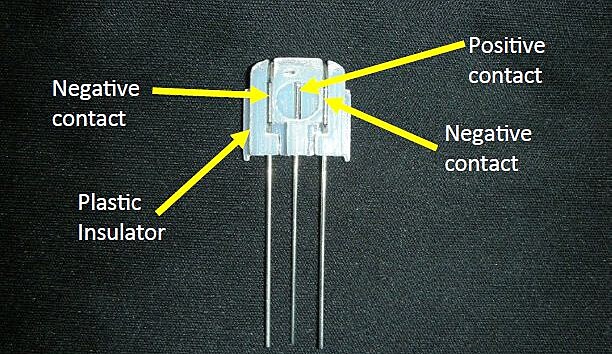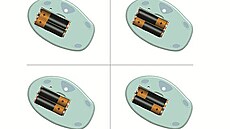<!—->
The solution is so simple that it’s hard to believe it hasn’t occurred to anyone before. And if that happened, and moreover, it was put into practice, it would save so many futile or lengthy attempts to exchange articles in the dark. Everyone knows that cells need to be inserted a certain way, for the electrical circuit to work properly. Small devices use direct current (DC), where the flow of electricity is constant and in one direction. There are several reasons why small devices are designed to work with direct current and cannot use alternating current (AC), which is commonly used in the electrical grid – and one of these reasons is related to the principles of operation of the cell or battery itself.
The cells cannot “store energy” in AC – it only works in DC configuration. From an economic and efficient point of view, it does not even make sense to convert direct current to alternating current. Therefore, it remained with DC. In addition, most portable monocell devices work with direct current. So this means that in the case of direct current, it is necessary to ensure the correct polarity – the cells must be inserted in a certain way. Positive pole at one end and negative pole at the other. In other words, if the article is inserted in the wrong direction, the device will not work.
InstaLoad operating principle
—
InstaLoad solved it in a very simple way
Microsoft came to the rescue more than a decade ago InstaLoad system. Which is a way to connect the cells to the device so that the power supply runs no matter how the monocells are inserted. The solution was to modify the lead and adjust the space for the cells so that each end had a positive and negative contact. The spacing of these contacts determines whether the “positive” or “negative” part of the article will be attached.

List of InstaLoad
—
If you look at the article, the flat end acts as the negative pole and the tip end serves as the positive pole. However, both sides of the InstaLoad connector look the same. The flat negative terminal is connected to the C-shaped flat contact, while the second contact intended for connection to the protruding positive terminal is moved backwards. As a result, every monocell – whether inserted one way or the other – is always connected correctly and energy flows as we need it.
InstaLoad operating principle
Microsoft claims that this system works with all common types of replaceable monocells, including CR123, AA, AAA, C or D cells. Of course, InstaLoad also works with rechargeable batteries. That’s all well and good, but Microsoft patented this system back in 2010, but we’ve spent the last 12 years paying attention to how we insert articles into devices. How is it even possible? Most people have never heard of this problem. Wondering why?
Why is the solution not used?
Despite the obvious advantages, InstaLoad has not caught on. And they can pay for it like most money. Microsoft has patented the solution, and if anyone wants to use it, they must pay the appropriate license fees. It’s common practice for someone to invent something – a lot of companies do. However, in the case of InstaLoad, it somehow doesn’t work out financially. Respectively contracts, licenses, the production of a new solution for storing monocells, etc. something costs and compared to the standard solution it would mean such an increase in price for equipment that the new method would use that people would rather buy it without it and continue to suffer from necessity insert articles correctly.

InstaLoad configuration
—
The addition of InstaLoad will not only increase the production costs of a company producing, for example, cheap radios or lamps, but it could even reach the point where it is almost better to use an internal, built-in rechargeable battery, due to increased production costs and design complexity.
But there is still hope
From all this, it follows that if the InstaLoad solution were to appear in practice, something would have to change. Probably the easiest is to relax the rules for fees for using this system. So it could finally be used to a much greater extent.
If, for example, Microsoft did not charge a fee and instead it was enough for the manufacturers to use its logo somewhere in the battery compartment, this might be an effective solution that would satisfy everyone. It is necessary to realize that so far InstaLoad does not use almost any device, so Microsoft would not lose it.
However, there are other obstacles
Change sounds good, but it still wouldn’t be certain if anything would change. There has been almost silence after InstaLoad for more than ten years. What’s more, it’s not surprising that Microsoft doesn’t use it (on its own devices). InstaLoad designed it as a simple solution, so it shouldn’t be too big for the device. If Microsoft doesn’t use it either, why should anyone else?
And what about you? Would you welcome InstaLoad or do you care? Let me know in the discussion.
<!—->
–


